Shane Melaugh & Viola Eva – SEO Sprint
$397.00 Original price was: $397.00.$58.90Current price is: $58.90.
Shane Melaugh & Viola Eva – SEO Sprint
Do less work. Get more customers.
Generate more traffic to your website by producing less content and ranking for it
Fine-tune your website to attract Google’s attention and track your results
the CEO of Thrive Themes,
and I recently made an embarrassing discovery….
I’ve been building and running online businesses for more than 10 years. As it turns out, I was making one huge mistake for far too long. It didn’t seem like much at the time, but I’ve only recently realized the size of that mistake in lost earnings.
It’s haunting.
If you’re a small business, solopreneur, course creator or you’re selling digital products online, then I want to share with you the mistake I wish I avoided years ago.
That’s why you build a website. It becomes your sales weapon, converting visitors and growing your business.
But no matter how high-converting your website may or may not be, it’s utterly useless without one key ingredient:
Traffic.
Without a steady flow of visitors arriving at your website – visitors that want what you’re selling – your website is nothing but dead weight on your hosting service.
But even with a low cost-per-click, only a small percent of your visitors convert and the ads end up costing more than the product you’re selling.You can try social media marketing…
But you’re on the hamster wheel, pumping out content for a short-lived spike in traffic that gets no attention after Facebook/ Instagram/ Whatever users have scrolled by.
You can share your content on other websites…
But each time you post in a forum or comment thread uninvited, you’re getting called out for ‘spamming’ and you’re hurting your own brand.
Imagine your website – the same one you have right now – starts to attract free traffic.Consistently.
Visitors that end up costing you nothing.
$0.00 per visitor.
$0.00 per lead.
$0.00 per customer.
…Leaving 100% of each sale as profit in your pocket.
This traffic isn’t just free: It’s exactly the people you wish for. People that want to be on your website, and want what you’re offering.
This is traffic that has already filtered out all of the wrong people: the complainers, the trolls, and the uninterested… Leaving just the right people: the attentive, the curious, the purchase-ready.
If you could tap into this magical traffic source, you could start to build some real growth.
You could focus your efforts on serving your customers and making kick-ass products rather than falling down the rabbit hole of ‘flash-in-the-pan’ traffic generation strategies.
So, what is this source of perfect and magical traffic?
Google.
5.4 billion searches are made here every day
Of course this traffic source is Google and not some well-hidden secret. I mean, you’re using it every day without even thinking, aren’t you?
Google, the multi-hundred-billion dollar empire that grew from a single search bar on a blank white background, is now responsible for 63,000 searches… per second (or 5.4 billion per day).
When people search for “productivity course” or “advanced excel training” or “how to grow giant pumpkins” or whatever term relates to your business, Google gives them exactly what they want within milliseconds.
It might not be the sexy answer you were hoping for, but Google single-handedly dominates the world of traffic.
Just look at this graph of all traffic sources to all websites:
Top Traffic Referrers To All Websites:
Data Source – SparkToro
57% of all traffic – ever – comes from Google
That’s literally more than 10x the traffic driven by Facebook. For all the attention that social media marketing gets, it is completely dwarfed by the size and power of Google traffic.
This graph made me realize that I’d been missing out. Big time. I’ve done well enough with my online businesses, but almost everything I’ve done to get traffic in the last 5+ years has been unrelated to Google search. I’ve been scraping together traffic from all those tiny slices of the pie and completely ignoring the Internet’s biggest, baddest traffic source.
Add to that another statistic to put everything in perspective:
91% of all website content receives no organic (unpaid) traffic.
Data Source – ahrefs
That means only 9% of webpages end up getting more than half of all the traffic on the internet.
And the reason that this balance is so skewed is because getting Google traffic is not an accident: it’s a strategy. The way you get that Google traffic is with SEO – Search Engine Optimization.
What I didn’t realize was that the issue wasn’t SEO – it was just that I was doing it the wrong way.
If I look back, I have a content graveyard of hundreds of awesome posts that were seen by my subscribers within a few days of publishing, but then never seen again.
So much of my time was spent making content that doesn’t get found.
The problem wasn’t that my content was bad, either. Anyone who tells you that Google just magically rewards “good content” with traffic is either ignorant or lying. That’s just not how it works.
If I had invested just a small amount of time into SEO, then my hard work over the years could have been worth tenfold more. I could have built content that gets traffic long after it was published. But I didn’t.
Most successful businesses don’t make that mistake.
Whenever you hear of some massively successful brand that grew from nothing, chances are they got into Google’s good-books and stayed there.
Google traffic is utterly superior to any alternative for 4 important reasons.
Yes, Google refers more traffic than all other sources combined.
But that’s not even the best thing about it. Maybe you’ve discounted SEO because it seems too difficult or time consuming, just like I did years ago. But here are the reasons that made me reconsider…
Google vs. Everything Else
Visitor’s Intent
Think about the last time you used Facebook or Instagram or whatever your preferred social media site is. Think of what happens when you see an ad or a post trying to sell something.
Do you want to see that ad? Do you welcome the ads? Do you go there for the ads?
At best, posts trying to sell are an annoying interruption from what people actually want from social media. Users aren’t actively looking to leave Facebook/ Instagram/ YouTube. That’s not their goal.
But look at what people want when they open Google:
They are literally looking for a new website to visit. They want to click a link, leave Google, open your website and discover a solution to a problem they have.
With almost every other traffic source, you are fighting to pull users away from the platform when they are not actively trying to leave. They want to stay, and you are the interruption.
But with Google, you become the goal, the intended destination that people are looking for.
WINNER: Google.
Part #2:
Google vs. Everything Else
Targeting
In Google search, your website will only show to the people who are specifically looking for it, in that very instant.
That means if they are not the exact kind of person to type that search term into Google, they won’t be given a link to your website.
Instantly filtering out junk visitors.
Compare that to a meager attempt to promote your website in online forums or the comments section on other sites. In those places, you are trying to catch the occasional user that might want what you’ve got.
But you risk the agonizing eye-roll of every other visitor that doesn’t care for your content. Cue the trolls who will call you out for ‘spamming’.
Your traffic generation strategy is only as good as the customers that you get. And with Google, it’s 100% laser targeted.
“But Shane, Facebook/social ads are also highly targeted!” I hear you lament.
Yes, you can precisely target your audience with Facebook ads, but the best you can get is still only to annoy the right kind of person. That’s a far cry from serving exactly what someone is looking for, the instant they’re looking for it.
WINNER: Google.
Part #3:
Google vs. Everything Else
Cost Over Time
Ever tried paid traffic and noticed it’s really easy to lose a lot of money, even if you have a great product and a good sales page?
Here’s why:
Let’s compare how Facebook paid ads stack up against Google organic traffic.
Depending on your niche and target audience, if you’re lucky an ad might cost you $1 per click (that’s being optimistic). Seems low, right?
Driving cold traffic straight to a sales page will rarely get sales, since the visitor has no reason to trust you. So typically, you drive that traffic to a lead generation page (20% conversion rate), get their email address, and sell to the lead from your mailing list over time. Let’s say 2% of your list will buy from you.
For Google traffic, they’ll arrive on your blog rather than a dedicated landing page, and then join from your opt-in forms at a lower 3% – 5% conversion rate. The rest of the steps are the same as above and we’ll assume you turn leads into sales at the same rate.
Suddenly that $1 per click for Facebook ads turns into $250+ just to acquire a new customer, and that’s being optimistic. If your product costs anything less than that, you’re going to lose money.
With Google traffic, your website becomes profitable because all it costs you is the upfront effort to prepare an SEO strategy and create content that ranks.
“But ads get me traffic immediately!” – Yes, that’s true.
Paid advertising will get you traffic within hours, but the moment you stop paying, the traffic is gone too.
Ranking in Google takes time, but the difference is that you aren’t paying for every click. You end up with free traffic months or years after you’ve done the work to rank your content.
Done right, Google traffic is just infinitely more profitable over time.
WINNER: Google.
Part #4:
Google vs. Everything Else
Residual Traffic
If you aren’t paying for traffic, you’re almost certainly doing content marketing. Whether that’s publishing on your blog or on social media, you’re churning out content to try and attract visitors to your site.
What’s the marketing strategy for your content? An email to your mailing list, then sharing the post on Facebook, Twitter and… what, maybe Reddit?
Tell me if this looks familiar – every time you publish a new content piece, your traffic looks like this:
Credit to Rand Fishkin and Tim Soulo for this concept
Your website will get a spike of traffic, a surge of people who are interested (for 5 minutes) when they see it on the socials. This is super motivating to see! Look at all these people coming to the website!
But then what?
Nothing.
No residual traffic. You broadcast your new content piece, you reach a portion of your audience (a shrinking portion on social media platforms) and then your content disappears, crowded out by a million other updates in people’s feeds.
This is the hamster wheel approach. Your content gets a quick spike of traffic and then immediately dies, so you desperately run back to start the next piece.
The typical advice is “publish frequently, on a regular schedule.” Turns out, the reason for this is that you need to, in order to create an illusion of traffic.
You basically need to stack as many “spikes of hope” next to each other as you can.
Compare that to SEO traffic:
If you publish a post that is strategically designed to rank in Google, then you’ll see the exact opposite. A few weeks or months after you post, organic traffic starts trickling in. It takes time, but once you’re ranking, that traffic doesn’t stop.
With the content marketing approach, you’re putting in time and effort just to keep the hamster wheel spinning. With SEO, you can spend the same time and effort on fewer content pieces and create a compounding effect: you get more and more and more traffic over time, for the same amount of work.
WINNER: Google.
-
Users are looking for a website to click (they want to leave Google)
-
It’s highly targeted (reaching the right visitors)
-
Affordable over time (You aren’t paying for clicks)
-
It builds compounding traffic (long after a page was published)
- High volume (57% of all internet traffic comes from Google… 57%! That’s just… insane!)
It isn’t new. Hype-y traffic buzzwords might get shared by the ‘get-rich-quick’ crowd, but optimizing for Google is the less exciting strategy that doesn’t have the perceived sparkle.
It’s invisible. You don’t see the strategies that get Google traffic. There are no vanity metrics showing off likes or shares, or an obvious ad letting you decipher a traffic generation strategy.
It isn’t immediate. Everyone is looking for the quick answer, the quick fix to their traffic problem. You can’t create content and get Google traffic within the hour. It can take months before you will rank.
If you’re a small business, coach or online course creator… ignoring Google as a serious source of traffic is madness.
One of the only ways to seriously build scalability and longevity in your business is to get in those search results.
And how do you do that?
Get immediately download Shane Melaugh & Viola Eva – SEO Sprint
With SEO.
Even a small SEO improvement to your website can have super long-lasting effects.
But in practice, SEO gets messy really quickly.
Ever had these thoughts?“Isn’t SEO complicated and intimidating?”
“I’m a tiny solopreneur business! I could never rank in Google!”
“It takes too long… and how do I even know if it’s working?”
“Don’t you have to spend $100s of dollars per month just for the tools to do SEO?”
You’re not alone.
The perception is that SEO only makes sense for mammoth businesses, and that you shouldn’t bother thinking about it until you’re a sizeable mini-empire anyway.
So you’re probably thinking: SEO just isn’t for me… yet.
And that’s absolutely true if you do it the way most people do. But we’re going to show you a new and better way that will work for small businesses. When you crunch the numbers, SEO should never be an afterthought: it should be the goal.
It has long been known that getting backlinks (other websites that link to your content) is a strong indicator that your website should rank in Google.
So it’s likely that you’re thinking “Ugh, I won’t get backlinks for my site… so I won’t rank”. You might be surprised to know that over 1,000,000+ web pages are getting 50 – 300 visits per month… with zero backlinks and with very low domain authority!
And 250,000+ web pages with zero backlinks are getting up to 1000 visits a day.
And even then, a good backlink strategy made for smaller websites will boost your rankings faster on those easy-to-rank-for keywords.
The takeaway here is that SEO is worthwhile for the little guy if you know how to pick your battles.
Even if you have just one post that ranks for a targeted keyword – even if it’s a low volume search term – then you can reap continual benefits for that one piece.
Automatic targeted traffic arriving to your website through just one post… without you needing to promote on social media daily.
Add another targeted post that ranks… and another… and your efforts start compounding.
It won’t happen overnight, but it’s a strategy that grows with you and your business will reap endless benefits for it.
While the social media influencer is getting up early to take their first selfie of the day, you get to sleep in knowing that Google is doing the work for you.
You – the website owner – have control over how Google sees your website.
But SEO gets ignored by too many small businesses.
Is that you?
Are you ignoring Google as a real traffic source?
Google’s bots are already looking through your website, already considering if your content is suitable for any of their searches. So if you work on your Search Engine Optimization, then your exact same website can seize that traffic.
And most of the advice you do find is either hopelessly outdated, made for websites way larger than yours, or made for professional SEOs.
That’s not very useful for you, is it?
Sure, you’d like to rank for relevant keywords in your niche and yes, you’d like to get that free traffic… but only if your efforts pay off.
If only there was a way to get 80% of the effects of SEO by just doing 20% of the work…
A rapid-implementation SEO strategy for the small business…
A system you can focus on once, do what needs to be done, and then return to your day-to-day knowing you’re not shooting yourself in the foot with SEO mistakes…
We know you haven’t got the time (or frankly the interest) to care for SEO. So this is the program to get you 80% of results from just 20% of the work. Complete the sprint, and return to doing the work you love knowing that your business is now capable of growing with Google.
To create SEO Sprint, we have partnered with world-class SEO expert, Viola Eva from Flow-SEO, who will bring you the most important strategies tailor-made for the coach and info-product entrepreneur that you can apply rapidly.
She is a sought after speaker at SEO and marketing events all around the world, having spoken and contributed at:Word Camp Europe
Digital Elite Camp by ConversionXL and Dreamgrow
Ungagged
Search Marketing Summit Sydney
VIP contributor to Search Engine Journal
Viola’s SEO skills have turned businesses around. Just look at what her clients have to say about her:
So, small websites actually have several advantages:
1
Google likes to show diverse search results, with a mix of media sites, blogs, magazines, etc. You will notice that as you start paying attention to it. Small businesses can become part of that diversity.
2
In my experience, large sites have way more technical issues than you think. They don’t spend their time fine-tuning a single blog post for SEO when they are working for six months just to update their SSL certificate.
3
Small businesses are much more agile and flexible than huge websites. By the time corporates went through 5 management meetings and submitted a ticket to their developers, you could have already created a hyper specific blogpost and be on your way to ranking.”
“The reality is that there’s a lot of traffic up for grabs for smaller websites. Many small businesses are crushing it with SEO traffic, and you can be too.
Just think about it:
As a solopreneur, coach, online course creator or whatever small business you have… aren’t you already putting time and effort into your website?
What are you doing to leverage that content for SEO?
Writing for SEO means making strategic efforts to get the most out of your content production. It means becoming a big fish in a small pond and dominating your niche of Google traffic.
SEO Sprint will guide you through exactly how to do that.
At the end of SEO Sprint, you’ll have a clear vision for:
-
What content you need to create to attract traffic
-
How to clean up and optimize your website
-
What keywords to target and how
What You Learn In SEO Sprint:
Technical Checklist to Track Your Results
In this bonus video lesson, you’ll learn how to revisit your SEO strategy after you’ve completed your 10-day sprint. You’ll understand how to do a basic SEO audit and spot major technical issues on your site, and how to measure and track your ranking results.
BONUS #2
SEO Tools Tutorials
Many SEO tools that cost $100s per month also offer free 7 or 14-day trials. Throughout SEO Sprint, we’ll teach you how to make the most of those trials and plan your strategy before they expire. You’ll get tutorials for these tools so that you know where to go and what to click before your trial has even begun.
BONUS #3
Non-English Website SEO Strategy
If your website isn’t in english, you actually have an advantage. Keywords that are highly-competitive in english are often easier to rank for in other languages. In this bonus video lesson, you’ll learn how to optimize your strategy for your language and seize that traffic quickly.
The entire SEO Sprint can be completed in just 10-days, but you do not need to start right away. You will have lifetime access to the course including all future updates so you can start and repeat the sprint whenever you want.
Once you’ve completed your sprint, we recommend revisiting your strategy once every 12 months.
By repeating the sprint, you will get clarity on what has/ has not been working, refine your SEO plan, and be able to plan the next steps with your content.
It’s the strategy that grows with you.
We hope that you will still be taking annual sprints for the next 5+ years, and scaling up your monthly organic traffic year over year.
The point here is that with SEO Sprint, our tools and resources are clean, easy and complete. You will have a single stream-lined system to follow.
So, don’t worry.
It might seem like a lot, but with our approach, you won’t be overwhelmed.
Following this system will sort out your entire research, analysis and strategy in just one short SEO sprint. Moving forward you can focus on your content and your audience.
There are 3 aspects to this:
All of the important groundwork is compressed into a 10 day sprint, with clear instructions, templates and examples for each step.
A sprint sets you up for your next content pieces, audits your website, and gets you on the right track. It gives you a clear, cohesive strategy. You sprint to get the strategy developed, and then after the sprint, you continue to make your content safely knowing it fits into your strategy.
Don’t let SEO become this complicated, frustrating project that drags on forever and leaves you with more questions than answers. Take 10 days to follow this system and get your strategy in place.
It’s 80/20
Whether we’re talking about ranking factors, keyword research, backlinks, content or site structure, there are always endless techniques, strategies and nuances.
Instead of falling down some rabbit hole, we always provide you with the 80/20 of what will give you the biggest results for the least amount of work.
The goal is not to learn everything there is to know about SEO – the goal is to learn what matters most and implement it in the most effective way possible.
It’s for the little guy.
There are some SEO strategies that only work for big brands. Teaching you those strategies has little benefit for you. Sure, it might be interesting, but it’s not actionable or practical.
In this course, everything you learn is tailored to the smaller scale business. We trim the fat and focus on what will make a difference for you.
We want you to be comfortable with this program, so let’s also be clear about what this course is not.
Get immediately download Shane Melaugh & Viola Eva – SEO Sprint
This is not a “business opportunity” – it’s a course for people who have a business and want to bring more people to it using SEO.
This is also not some promise of “rank for any keyword” or “how to rank in the #1 spot, over night” or any BS like that. You won’t learn any black hat techniques, there’s no spammy links, dodgy shortcuts or gonna-get-slapped-soon loopholes.
This course is not about outsourcing or automating everything as cheaply as possible. It’s not “get this content written for $5 and then buy this link package for $10”. That stuff just doesn’t work anymore.
It’s not for advanced, technical SEO. If you run a giant ecommerce site with thousands of dynamically generated pages that you want to optimize, SEO Sprint is not for you. This program is perfect if you’re a solopreneur or run a small team with a website that mainly consists of pages and blog posts written by humans.
In short, this is about real SEO for real people. No bullshit, no keyword stuffing, no spam links.
The goal is to create high quality content and get rankings and traffic that last long term for keywords that are matched perfectly to your business goals.
Since SEO is one of those strategies that really moves the needle, hiring a professional to do it for you isn’t cheap. The value of great SEO massively overtakes the upfront investment.
If you wanted to hire a real professional, you would be paying them $100 – $150 USD per hour.
And then most agencies would quote you 5 – 15 hours of work just for Keyword research, which would then come in at $500 – $2250 USD.
If you wanted a regular website audit to see the state of your SEO and get a custom made strategy? That’s 15 – 25 hours of work, totalling $1500 – $3750 USD.
That might sound expensive, but in truth: it’s worth it.
But we know that for you and your small-scale business, you don’t realistically have that kind of money to invest in SEO.
Which is why we want to teach it to you, so you can make educated decisions on your own for a mere fraction of the cost.
Course Features
-
Lectures
0 -
Quizzes
0 -
Duration
10 weeks -
Skill level
All levels -
Language
English -
Students
138 -
Assessments
Yes
Be the first to review “Shane Melaugh & Viola Eva – SEO Sprint” Cancel reply
Related products
SEO & Design Website
SEO & Design Website
SEO & Design Website
SEO & Design Website
SEO & Design Website
SEO & Design Website
MindMekka – Build Your Own Website with WordPress: A Step-by-Step Guide
SEO & Design Website
SEO & Design Website



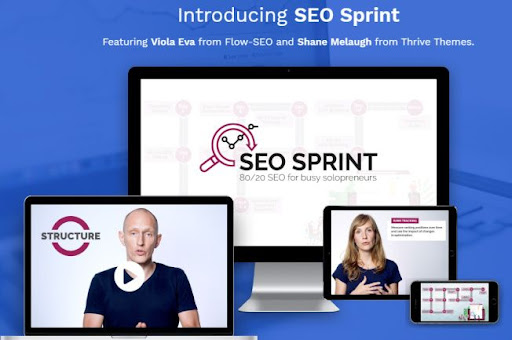
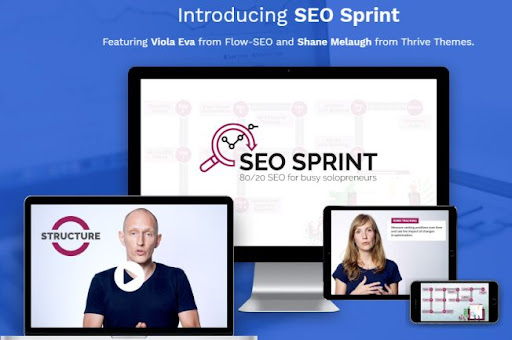
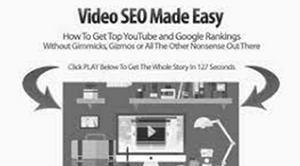

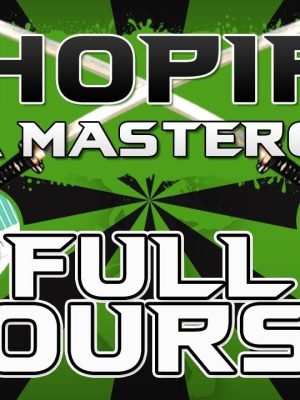

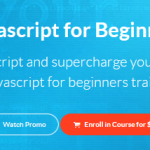
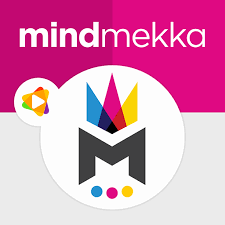


Reviews
There are no reviews yet.